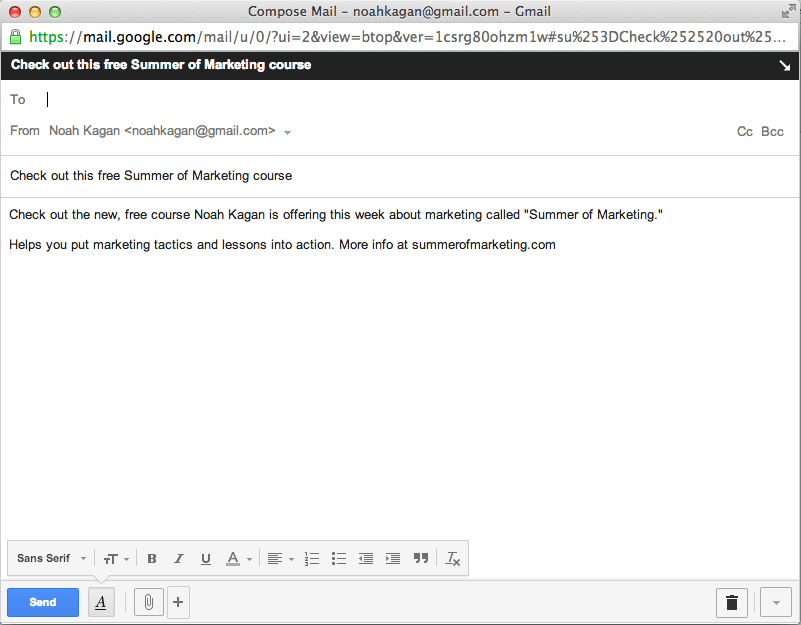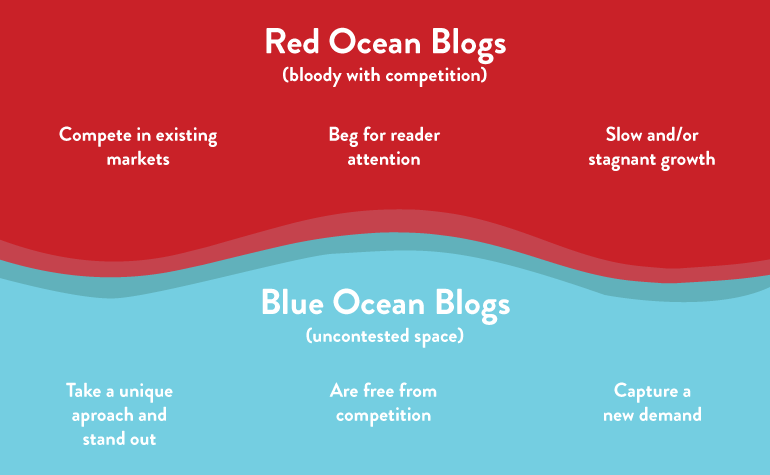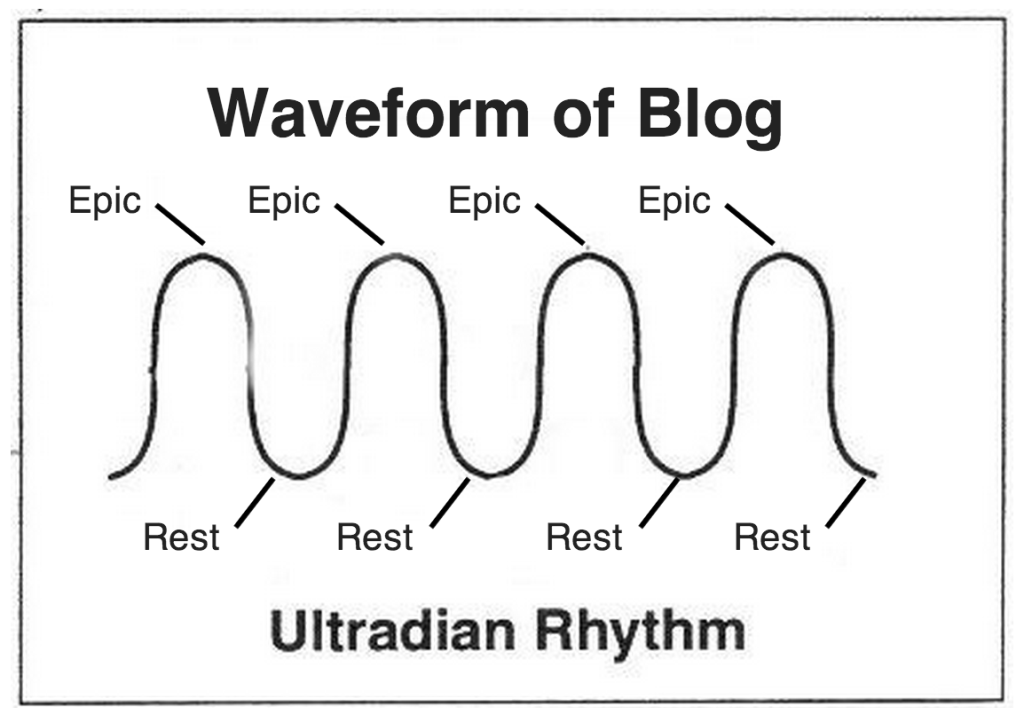
The Burrito Principle and Beyond: 12 New Marketing Ideas That Are Memorable, Actionable, and Useful
Former VP of Marketing @ Buffer
I sometimes find myself getting lost in a sea of marketing advice.
There’s just so much out there. We produce four to five marketing posts on the Buffer blog every week, and we are just one of many sources of social media marketing advice. Multiply our handful of weekly posts with the countless blogs, tweets, updates, and emails, and the social media tips grow exponentially.
How can a marketing idea or bit of advice stand out from the crowd?
We’ve certainly been eager to experiment with answers to this question—headlines, timing, frequency, etc. How about giving your great marketing idea its own name?
In this post we’ll explore 12 unique ideas to improve your marketing, each with a distinctly memorable name and concept.
1. Pomodoro Marketing
It’s fitting to start with this marketing idea because it forms the basis for the rest of the ideas to come. If you want your idea to be memorable, give it a name.

On the Help Scout blog, Gregory Ciotti points out just how useful Pomodoro Marketing can be, using the example of the Pomodoro Technique for time management. The technique, which has you split your time into stretches of activity and rest, is much like many other timeboxing methods, yet Pomodoro has gained a foothold because of its memorable name.
This concept of “coining an idea” helps readers better remember what you’re sharing. Coined phrases can be simple, visual, distinct interpretations of an idea. When given a name, these ideas become sticky.
Famous examples of coined ideas include:
- Growth hacking
- Inbound marketing
- Permission marketing
- Content shock
The other marketing ideas in this list all share the same trait: Each has its own coined phrase that makes it memorable.
2. The Samuel L. Jackson Marketing Hack
Noah Kagan coined this marketing idea as a helpful reminder to make your marketing efforts with social, with content, and with email as easy as possible for your customers. The idea is that people want to share cool things with their friends but they might be too lazy to do so (in the words of Samuel L. Jackson, they’d be “lazy mofos”).
Kagan’s hack is to make sharing—specifically, sharing via email—a complete no-brainer. Instead of asking someone to forward an email to a friend, you write the email out for them.

The email above comes entirely prepopulated; all a visitor has to do is click on a link. To create the link, prepare the subject line and body text that you’d like to use, then drop it into an encoding tool. When you’re typing out your link, use the following setup, placing your encoded text in the correct spots:
mailto:?subject=PASTE SUBJECT HERE%26body=PASTE BODY HERE
Your hyperlink will probably be quite long, but no matter. It’ll look like a normal, everyday link to your readers, and if done correctly, it will be incredibly simple for them to share.
3. Blue Ocean Strategy
The book Blue Ocean Strategy by W. Chan Kim and Renee Mauborgne teaches a way to create uncontested markets that reach new customers and render competition irrelevant. The idea carries over to your social media marketing and content marketing, too.
Garrett Moon of CoSchedule does a great job of digging into this idea. There are two types of oceans: the red ocean, which is bloody with competition, and the blue ocean, which is clear, uncontested space. You want your marketing efforts to be in the blue ocean. Here’re some differences between the two oceans:
Blue ocean / Red ocean
Take a unique approach and stand out / Compete in existing markets
Free from competition / Beg for attention
Capture a new demand / Slow and/or stagnant growth

To find a blue ocean strategy for your marketing, you can begin by tracking what others in your industry are already doing (identifying the red oceans), then asking yourself, “What makes me unique? What can I do better than anyone else?” Your answers could lead you to an outside-the-box, blue ocean strategy.
When is the best time to post to social media? During someone’s downtime—say, when they’re eating a burrito.
That’s the basis behind the Burrito Principle, an idea brought forth by Darian Rodriguez Heyman of Social Media for Nonprofits.
The basic idea is that you want to reach people on Facebook and Twitter during their down time, when they’re most likely to log in. Your Facebook posts and tweets should be timed to catch people when they have time on their hands.

Heyman even goes so far as to suggest a handful of downtime windows that could be ideal moments for catching up on the latest social media postings. (The lunch time window is where the principle gets its name; people like to eat burritos for lunch.)
- 8:30 a.m.—commuting to work
- 12:30 p.m.—eating lunch
- 5:30 p.m.—commuting home
- 10:00 p.m.—after the kids are asleep
5. The Late-Night Infomercial Effect
Another way of looking at the best time to post to social media (or to send emails or to publish blog posts) is the Late-Night Infomercial Effect. The idea comes from an in-depth blog post by Moz’s Peter Bray about the lifecycle of a tweet, wherein Bray suggests a number of different theories for the optimal time to post.
The Late-Night Infomercial Effect suggests that the best time might be late at night when fewer people are posting and there is lower volume of content. The less content there is, the more likely your post might stand out.
I can also make a case that the best time to tweet is when the least amount of your followers are online. Why? Because it’s kinda like watching TV at 3 am versus 9 pm. At 3 am you find yourself watching infomercials because there is nothing else on. So, perhaps tweeting at 3 am, when few of your own timezone followers online, will more likely catch those night owl’s attention, versus tweeting in the middle of the day when your audience has many other tweeters drawing their attention?
6. P.O.S.T. Method
Charlene Li and Josh Bernoff introduced the P.O.S.T. Method for social media campaign in their book Groundswell. The acronym covers four essential parts to success on social media.
People – Understand your audience
Objectives – Set clear, measurable goals for success
Strategy – Have a plan to achieve your objectives
Technology – Understand and utilize appropriate tools that fit your strategy
7. The Pac-Man Effect
Mention‘s study of more than 1 billion small business mentions on social media revealed the extent to which customers interact with companies on social media. A small percentage of interactions—only 6 percent—are negative. The remaining 94 percent are positive or neutral, with neutral conversations—your average, every day, run-of-the-mill interactions—accounting for 76 percent of total mentions.
When plotted on a pie chart, these conversations look a bit like Pac-Man. Hence, the Pac-Man Effect.

8. White Bread vs. Wheat Bread
Thinking of marketing in terms of bread is an idea first floated by Hubspot’s Pamela Vaughan and detailed out by Gregory Ciotti. White bread vs. wheat bread describes the distinction between two different types of content or two different types of social media updates. Basically,
White bread content is the easy, snackable, shareable content that aims to get into the hands of everybody
Wheat bread content is the deeper, tougher, solutions-based content that is highly valuable for a smaller group of people
It’s important to have a mix: white bread content can grow your traffic and social shares, and wheat bread content can grow your authority and reputation. The same goes for white/wheat bread on social: Your updates can be fun and shareable (white bread) along with updates that are deeper and helpful (wheat bread).
9. Skrillex Content
We coined this one ourselves, thinking of how we create content on the Buffer blog. Ideally, we aim for a waveform of in-depth, detailed guides to social media marketing along with shorter, lighter reads on marketing topics. Together, these content types create balance.

We feel that our blog content should ebb and flow—or, in the world of dubstep and Skrillex, our content should build and drop. One way we’ve found to describe Skrillex content is this:
All blog posts should be awesome. Not all can be epic.
It’s important to strike a good balance by avoiding a big run of epic content all at once.
10. The 2 Pizza Rule
To show that coined phrases exist even on the outskirts of marketing ideas, I thought I’d highlight one of the more popular marketing/team-building rules out there: Jeff Bezos’s two pizza rule.
If a team can’t be fed with two pizzas, it is too big.
This rule came about as Bezos built teams at Amazon. He strived for a lean approach to team-building, understanding that there are costs involved in expanding a team too rapidly or too far. You might consider the same idea as you build a marketing team or as you scale your content and social strategies.
11. The Hedgehog Concept
Jim Collins covers the rise of exceptional companies in his book Good to Great, highlighting the qualities that separate amazing companies from their competitors. One of those qualities is the Hedgehog Concept.
The concept gets its name from an essay by Isaiah Berlin where he compares the tactics of a fox to the tactics of a hedgehog. As an ancient Greek parable states: “The fox knows many things, but the hedgehog knows one big thing.”
Every day when the fox uses its cunning to attack the hedgehog, he gets rebuffed when the hedgehog rolls into a spiky ball—the one big thing the hedgehog knows how to do, every day, every time. The fox accumulates a myriad of strategies, but the outcome is always the same.
Foxes are scattered, spread out, moving in many different directions at once.
Hedgehogs are focused, simplifying their strategy to a single organizing idea.
Can you see how this might relate to marketing? According to Jim Collins, “Hedgehogs see what is essential and ignore the rest.”
To arrive at a Hedgehog Concept in your business, your marketing, your content, or your social media, Collins created a Venn diagram of the three circles of a Hedgehog Concept.

When you find a concept that fits all three qualities, you’ve found your Hedgehog Concept.
12. The Drafting Technique
This marketing idea for getting press comes from Derek Halpern of Social Triggers. The Drafting Technique (think race cars drafting behind one another for speed, not writers drafting different editions of copy) advises three ways to find press coverage:
- Draft behind competitors: Find where your competitors have been published and pitch yourself to the same press.
- Draft behind a topic: Search for similar coverage of your chosen topic and pitch those authors and sites.
- Draft behind people: Find where your peers have been interviewed and covered and pitch yourself to the same outlets.
Over to you
Hopefully you’ve found several takeaways from this list of unique ideas. The ideas themselves should be helpful as you plan your marketing strategies, and the concept of a coined phrase could be a neat way to help your next great idea become even greater—more memorable, more helpful, and more shareable.
Now that you’re aware of these coined phrases for marketing ideas, you may even start to notice them more and more out there in the wild. I’d love it if you reported back what you find!
What marketing ideas and coined phrases have you noticed, or invented yourself? I’m sure there are plenty I’ve missed! Share them here in the comments.
Image credits: joncockley, OK Dork, CoSchedule, Mention, Jim Collins
Try Buffer for free
140,000+ small businesses like yours use Buffer to build their brand on social media every month
Get started nowRelated Articles

In this article, I’ll explain what SEO is for social media, why you should care about it, and how you can use it to your advantage.

I spoke to leading B2B content marketers (an in-house content director, agency owners, top freelancers, and thought leaders) to find out what they think B2B brands can do to create good content in 2024.

Black Friday and Cyber Monday marketing guidance to help you stand out from the crowd — complete with tried-and-tested examples.